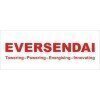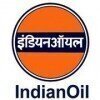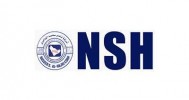Filter interviews by
PETROJET Safety Officer Interview Questions and Answers
PETROJET Safety Officer Interview Experiences
1 interview found
(3 Questions)
- Q1. They have asked me questions about Lifting precautions, Excavation precautions, confiend space hazards and precautions then first they Shortlisted my cv which has Aramco approval
- Q2. What should you need before entering a confined space, what you do before an Excavation, what is the role and responsibility of safety officer, what is critical lifting, what is schedule 'D'
- Q3. What is 2.100, What is 6.012 What is 7.025 Waht is anti two block Different between Hazard and risk
- Ans.
The question includes numerical and technical terms related to safety officer role.
2.100, 6.012, and 7.025 are likely weight limits or load capacities for equipment
Anti two block is a safety feature that prevents a crane from overextending its boom
Hazard refers to a potential source of harm, while risk is the likelihood and severity of harm occurring
Interview Preparation Tips
Top trending discussions






Interview questions from similar companies

(6 Questions)
- Q1. What about yourJob ?
- Q2. My job is everything provide safety
- Q3. What's your self ?
- Q4. This is my all job relationship details
- Q5. Which hieght need work at height?
- Ans.
Work at height is typically considered to be any task performed above ground level, such as on ladders, scaffolding, or roofs.
Work at height typically refers to tasks performed above ground level
Common examples include working on ladders, scaffolding, or roofs
Height requirements may vary depending on the specific job or industry
- Q6. Ground level to 1.8 mtr
- Ans.
The question is likely referring to the height range for safety measures or regulations.
This height range is commonly used in safety regulations for fall protection.
Safety measures such as guardrails or safety harnesses may be required for working at this height.
Training on proper use of safety equipment is essential for workers at this height.
Interview Preparation Tips

Safety Officer Interview Questions & Answers
Megha Engineering & Infrastructuresposted on 25 Jun 2024
(2 Questions)
- Q1. What is HIRA and how to prepare it
- Ans.
HIRA stands for Hazard Identification and Risk Assessment. It is a systematic process to identify potential hazards and assess the associated risks.
Identify all potential hazards in the workplace or task
Assess the likelihood and severity of each hazard
Determine the level of risk for each hazard
Implement control measures to mitigate or eliminate the risks
Regularly review and update the HIRA as needed
- Q2. What is JSA and its purposes
- Ans.
JSA stands for Job Safety Analysis. It is a process used to identify and control hazards in the workplace.
JSA involves breaking down a job into its individual tasks and identifying potential hazards associated with each task.
The purpose of JSA is to prevent accidents and injuries by proactively addressing safety risks.
JSA helps in developing safe work procedures and training employees on how to perform tasks safely.
Exa...
HIRA , JSA, MSDS , PTW
Interview Preparation Tips

Safety Officer Interview Questions & Answers
Shapoorji Pallonji Groupposted on 19 Oct 2023

(1 Question)
- Q1. Salary, location jonlb
(1 Question)
- Q1. Work permit, checklist, hira , JSA

Interview Questionnaire
1 Question
- Q1. How to provide fall arresting system in high rise storry
- Ans.
Fall arresting system in high rise story can be provided through various means.
Use of safety nets
Installation of guardrails
Use of personal fall arrest systems
Proper training and education of workers
Regular inspection and maintenance of equipment


(2 Questions)
- Q1. Safety related question work at height. Lifting Plan
- Q2. Log out Tag out related question
Interview Preparation Tips

Safety Officer Interview Questions & Answers
Megha Engineering & Infrastructuresposted on 23 Aug 2023
I applied via Naukri.com

(5 Questions)
- Q1. How many type of hazard
- Ans.
There are three main types of hazards: physical, chemical, and biological.
Physical hazards include slips, trips, falls, noise, vibration, and extreme temperatures.
Chemical hazards involve exposure to harmful substances like gases, liquids, and dusts.
Biological hazards come from exposure to viruses, bacteria, fungi, and parasites.
- Q2. What is confined space
- Ans.
Confined space is an area that is not designed for continuous occupancy, has limited entry and exit points, and may have poor ventilation.
Confined spaces are typically small and enclosed, making it difficult to enter and exit.
These spaces may contain hazardous substances or conditions that can be harmful to workers.
Examples of confined spaces include storage tanks, silos, tunnels, and sewers.
- Q3. What is hazard of work at height
- Ans.
Working at height poses risks of falls, falling objects, and structural collapses.
Falls from height can result in serious injuries or fatalities
Objects dropped from height can cause harm to workers below
Structural collapses can occur due to improper installation or maintenance
Safety measures such as guardrails, harnesses, and regular inspections are crucial to prevent accidents
- Q4. What is safety in construction
- Ans.
Safety in construction refers to the measures taken to prevent accidents, injuries, and fatalities on construction sites.
Ensuring proper training and supervision of workers
Implementing safety protocols and procedures
Providing personal protective equipment (PPE)
Regular inspections of equipment and work areas
Emergency preparedness and response plans
Examples: Fall protection systems, scaffolding safety measures
- Q5. How many type of fire
- Ans.
There are five main classes of fire: Class A, Class B, Class C, Class D, and Class K.
Class A fires involve ordinary combustible materials such as wood, paper, and cloth.
Class B fires involve flammable liquids like gasoline, oil, and grease.
Class C fires involve energized electrical equipment.
Class D fires involve combustible metals like magnesium, titanium, and sodium.
Class K fires involve cooking oils and fats commonl
Interview Preparation Tips

Safety Officer Interview Questions & Answers
Shapoorji Pallonji Groupposted on 30 May 2022
I applied via Naukri.com and was interviewed in Apr 2022. There were 4 interview rounds.

How to implement workers to do work in a Safety process.
How to minimize and control hazard.
(2 Questions)
- Q1. Salary discussion and about previous work.
- Q2. How much expection about salary.
Interview Preparation Tips
- About safety hazard.

Safety Officer Interview Questions & Answers
Megha Engineering & Infrastructuresposted on 19 Jun 2021
I applied via Walk-in and was interviewed in Dec 2020. There was 1 interview round.
Interview Questionnaire
1 Question
- Q1. 1 Tell me about your self 2 Project work 3 some basic topics related to safety 4 C.V. basic topics
Interview Preparation Tips

Safety Officer Interview Questions & Answers
Shapoorji Pallonji Groupposted on 26 Dec 2021
I applied via Walk-in and was interviewed in Nov 2021. There was 1 interview round.
Interview Questionnaire
21 Questions
- Q1. HIRA full from
- Ans.
HIRA stands for Hazard Identification and Risk Assessment.
HIRA is a systematic process of identifying potential hazards and analyzing the associated risks.
It involves identifying the hazards, assessing the risks, and implementing control measures to mitigate the risks.
HIRA is an important tool for safety officers to ensure the safety of employees and the workplace.
Examples of hazards that can be identified through HIRA...
- Q2. ISO stander
- Q3. IBOSh full from
- Ans.
I'm sorry, but the question is not clear and seems to be incomplete.
Please provide more context or rephrase the question.
Without proper information, I cannot provide a relevant answer.
Kindly clarify the question so that I can assist you better.
- Q4. Safety belt lanyard length
- Q5. NEbosh full from
- Q6. Audit report
- Q7. Job related
- Q8. Crane load capacity
- Q9. LMR full from
- Ans.
LMR full from refers to a situation where the Land Mobile Radio system is at maximum capacity.
LMR full from means that the Land Mobile Radio system is unable to accommodate any more users or communications.
This can occur when all available channels or frequencies are in use.
It may result in communication delays or the inability to establish new connections.
LMR full from can impact the effectiveness of emergency respons...
- Q10. Work to permit
- Q11. EHS meeting
- Q12. Road safety
- Q13. Electrical safety
- Q14. Fire hazard
- Q15. What is safety
- Ans.
Safety is the state of being protected from harm, danger, or injury.
Safety involves identifying and assessing potential hazards
It requires implementing measures to prevent or mitigate those hazards
It involves training and educating individuals on safe practices
Safety is a continuous process that requires ongoing evaluation and improvement
Examples of safety measures include wearing personal protective equipment, followi...
- Q16. Shut down work
- Ans.
Shutting down work is a crucial safety measure to prevent accidents and ensure the well-being of workers.
Shutting down work may be necessary in case of an imminent danger or hazard that cannot be immediately controlled.
It is important to have clear protocols and procedures in place for shutting down work in different scenarios.
Examples of situations that may require work shutdown include gas leaks, chemical spills, str...
- Q17. CSR activities
- Q18. Foundation work relate
- Q19. Severity rate
- Q20. What is accident
- Ans.
An accident is an unexpected and unintentional event that causes harm or damage.
Accidents can happen in any setting, including workplaces, homes, and on the road.
They can result in physical injuries, property damage, or both.
Accidents can be caused by human error, equipment failure, or environmental factors.
Examples of accidents include slips and falls, car crashes, and machinery malfunctions.
- Q21. What is incident
- Ans.
An incident is an unplanned event that results in injury, damage, or loss.
Incidents can occur in any workplace or environment
They can range from minor incidents such as slips and falls to major incidents such as explosions or fires
Incidents should be reported and investigated to prevent future occurrences
Proper safety measures and training can help prevent incidents from happening
Interview Preparation Tips
PETROJET Interview FAQs
Tell us how to improve this page.
Interview Questions for Popular Designations
- Safety Supervisor Interview Questions
- Fire & Safety Officer Interview Questions
- Senior Safety Officer Interview Questions
- Safety Engineer Interview Questions
- Drug Safety Associate Interview Questions
- Safety Manager Interview Questions
- Safety Supervisor, Safety Officer Interview Questions
- Safety Executive Interview Questions
- Show more
Safety Officer Interview Questions from Similar Companies
PETROJET Safety Officer Reviews and Ratings
based on 5 reviews
Rating in categories
|
Safety Officer
12
salaries
| ₹8 L/yr - ₹14 L/yr |
|
Mechanical Engineer
7
salaries
| ₹2.3 L/yr - ₹11.7 L/yr |
|
HSE Officer
7
salaries
| ₹10.4 L/yr - ₹15 L/yr |
|
Work Permit Receiver
6
salaries
| ₹2 L/yr - ₹11.2 L/yr |
|
QC Piping Inspector
5
salaries
| ₹12.5 L/yr - ₹15 L/yr |

L&T Energy Hydrocarbon

TechnipFMC

Nayara Energy

Reliance Industries
Calculate your in-hand salary
- Home >
- Interviews >
- PETROJET Interview Questions >
- PETROJET Safety Officer Interview Questions




